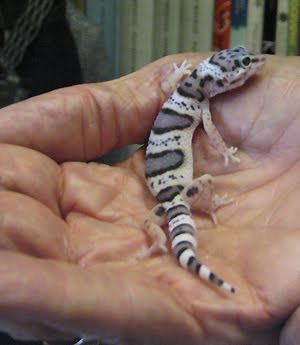Evolutionary biologists Timothy Higham of Clemson and Anthony Russell (my Ph.D. advisor) of Calgary have found that the self-severed tail of some geckos shows a complex pattern of repeating movements to distract the attacker."Autotomy is the process by which an appendage is voluntarily shed by animal. A number of reptiles, amphibians, mammals and many invertebrates developed the defense mechanism over time," said Higham. "Some geckos' severed tails can move repeatedly, allowing the gecko to escape and grow a replacement. It's like a gecko's personal injury insurance policy."
Higham and Russell explored how the tail continues to function, using motion to entice a predator while the gecko escapes.
The research shows that a severed – autotomized – tail of leopard gecko makes four to eight rhythmic moves per second with one or two complex movements – dramatic flips or lunges – during the first 50 seconds of its separation.
How does the tail do it? The scientists theorize that central pattern generators in the tail control the actions. Central pattern generators are made up of a network of nerve cells that enable repeatable pattern of behavior, such as chewing, walking, flying.
The gecko study adds to the evidence that central pattern generator networks can function without being linked to a brain or central nervous system. The findings present the prospect that human central pattern generators could play a role in restoring motion to people with spinal injuries. link
